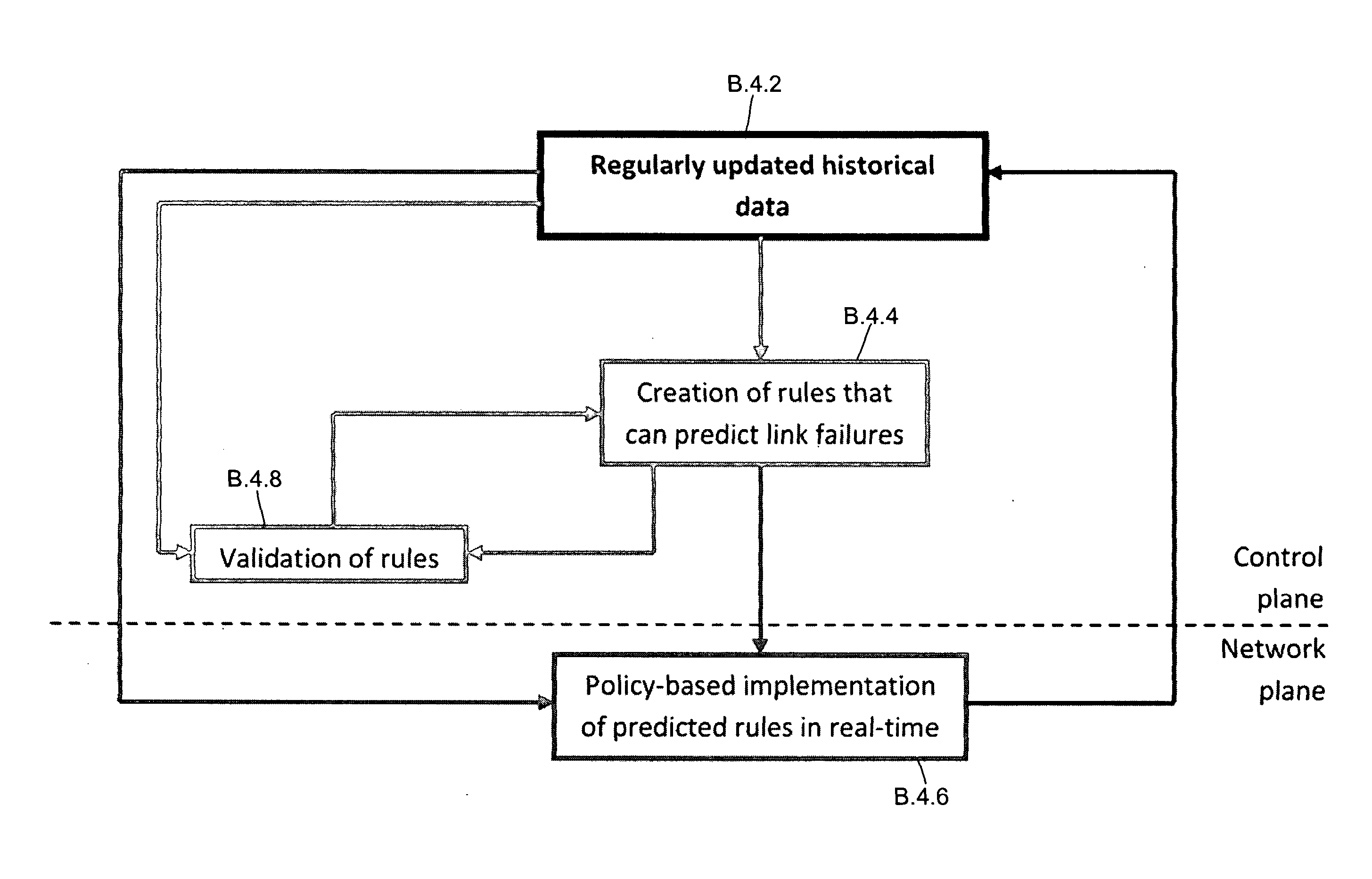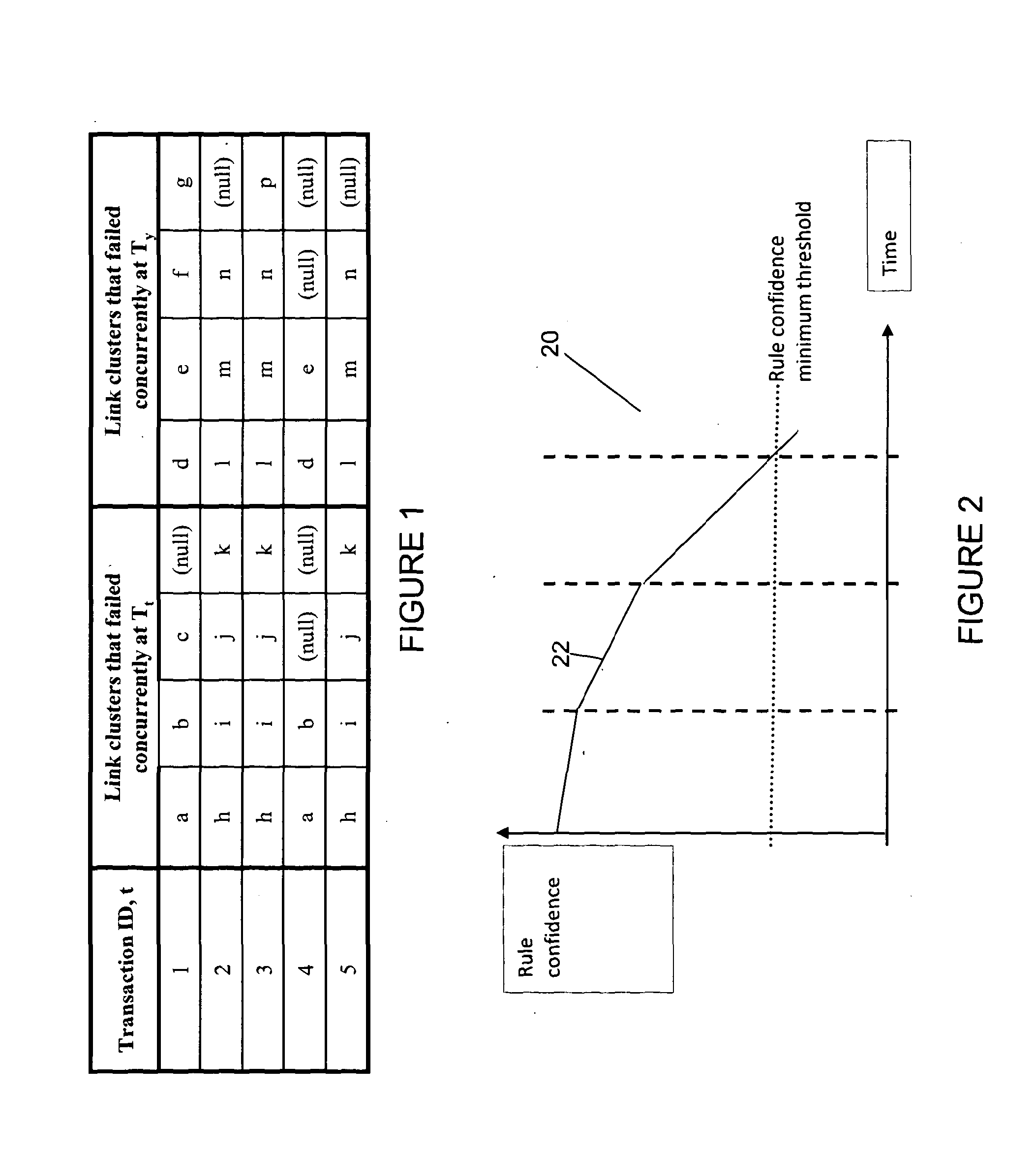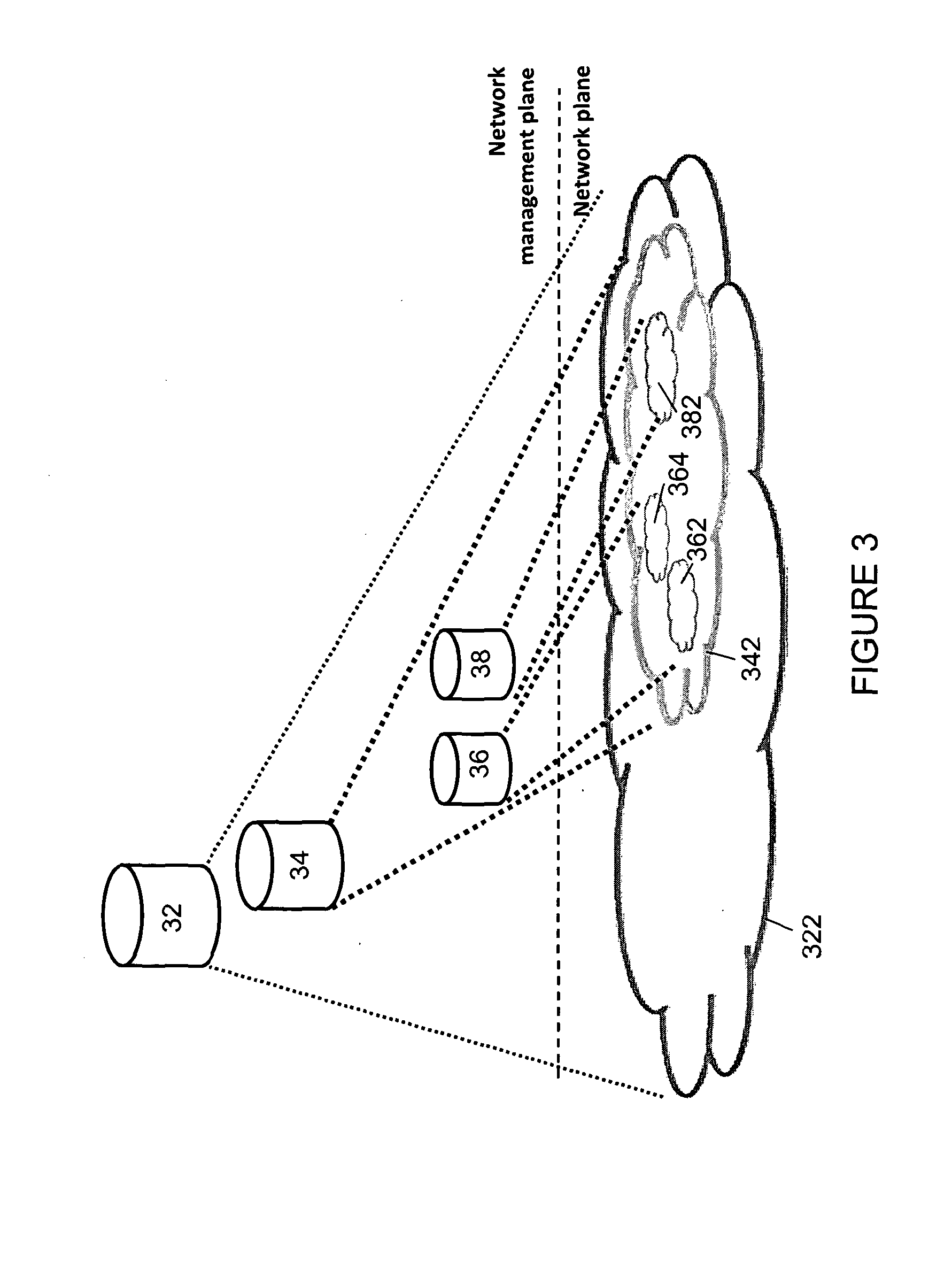Network routing adaptation based on failure prediction
a network routing and failure prediction technology, applied in data switching networks, frequency-division multiplexes, instruments, etc., can solve problems such as loss of ip connectivity between network components, and achieve the effect of reducing link load and eliminating packet loss due to link failures
- Summary
- Abstract
- Description
- Claims
- Application Information
AI Technical Summary
Benefits of technology
Problems solved by technology
Method used
Image
Examples
Embodiment Construction
[0050]An overview of the operation of embodiments of the invention will now be described with respect to FIG. 4, followed by further description of a more detailed embodiment.
[0051]Embodiments of the invention provide a system that predicts network link failures and creates a change in the network before the failure actually happens by instigating policy-based adjustment of routing parameters. In particular, an embodiment of the invention operates in two phases. In the first phase the historical operation of a network is observed (B.4.2), to determine observed relationships between link or cluster failures that have occurred, and subsequent failures of different links or clusters. From these observed relationships failure rules can be derived (B.4.4) that are then applied to control routing in the network during a second, control, phase. That is, in the second, control, phase, the derived failure rules are applied such that if a link or cluster failure occurs, then from the rules a ...
PUM
 Login to View More
Login to View More Abstract
Description
Claims
Application Information
 Login to View More
Login to View More - R&D
- Intellectual Property
- Life Sciences
- Materials
- Tech Scout
- Unparalleled Data Quality
- Higher Quality Content
- 60% Fewer Hallucinations
Browse by: Latest US Patents, China's latest patents, Technical Efficacy Thesaurus, Application Domain, Technology Topic, Popular Technical Reports.
© 2025 PatSnap. All rights reserved.Legal|Privacy policy|Modern Slavery Act Transparency Statement|Sitemap|About US| Contact US: help@patsnap.com



